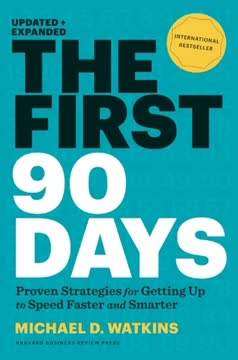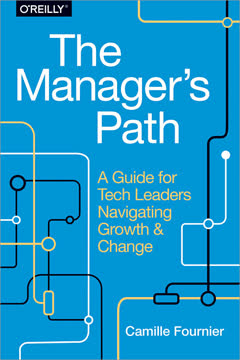重点摘要
1. 项目管理是一种在约束条件下实现特定目标的结构化方法
质量 = 时间 + 成本
项目管理三角形。 成功的项目平衡三个关键约束:时间、成本和质量/范围。改变任何一个变量都会影响其他变量。例如,减少时间通常需要增加成本或降低质量。项目经理必须根据利益相关者的优先级和项目目标在这些因素之间进行权衡。
项目管理的阶段。 大多数项目遵循四个主要阶段:
- 规划:定义目标、范围、任务和资源
- 建设:组建团队并创建详细的时间表
- 实施:执行任务并监控进度
- 收尾:评估结果并总结经验教训
有效的项目管理需要根据不确定性的程度调整方法。对于可预测的项目,传统的规划方法效果很好。对于具有许多未知因素的创新项目,使用短周期和频繁重新规划的自适应方法更为合适。
2. 有效的规划为项目成功奠定基础
SMART目标应是:具体的、可衡量的、行动导向的、现实的、时间有限的
定义明确的目标。 模糊的目标会导致误解和失望。与利益相关者合作,建立具体的、可衡量的目标,以符合业务需求。将高层次的目标分解为具体的可交付成果和里程碑。
创建详细的项目计划。 关键的规划工具包括:
- 工作分解结构(WBS):项目任务的分层分解
- 关键路径法(CPM):确定关键活动的顺序
- 甘特图:任务和依赖关系的可视化时间表
- PERT图:显示任务关系的网络图
让团队参与规划,以获得认同并及早发现潜在问题。随着项目进行,准备好根据新信息调整计划。
3. 建立一个凝聚力强的团队对项目执行至关重要
互相负责会带来惊人的结果。
组建合适的技能组合。 在组建团队时,不仅要考虑技术专长,还要考虑解决问题的能力、人际交往技能和组织知识。目标是多样化的视角和背景。
促进团队凝聚力。 建立高绩效团队的策略:
- 举行启动会议,统一目标和期望
- 确立明确的角色和职责
- 创建共享的规范和基本规则
- 鼓励开放的沟通和建设性的辩论
- 庆祝里程碑和团队成功
有效的团队会发展出互相负责的文化,成员不仅对领导负责,还对彼此负责。这比单独的责任感驱动更高的绩效。
4. 实施需要不断监控和适应
及时响应数据或信息的变化,寻找问题的早期迹象,以便采取纠正措施。
严格跟踪进度。 使用定期检查、进度报告和项目管理软件来监控任务完成情况、预算使用情况和整体项目健康状况。特别关注关键路径活动,如果未按时完成,这些活动可能会延误整个项目。
根据需要调整计划。 很少有项目完全按计划进行。准备好根据新信息或变化的情况调整时间表、重新分配资源或修改可交付成果。在做出更改时:
- 评估对项目目标和约束的影响
- 与利益相关者清晰沟通
- 记录决策和理由
- 相应地更新项目计划和时间表
在保持灵活性的同时,专注于核心项目目标。并非每个建议的更改都需要实施。
5. 沟通在项目生命周期中至关重要
利益相关者通常希望定期更新和状态报告。与他们协商,了解他们希望获得多少信息以及以何种形式。
根据受众调整沟通。 不同的利益相关者有不同的信息需求:
- 高管:高层次的进展、风险和业务影响
- 团队成员:详细的任务分配和依赖关系
- 客户/最终用户:里程碑和变更对他们的影响
使用多种沟通方法:
- 定期状态会议和报告
- 项目仪表板或记分卡
- 用于时间敏感信息的电子邮件更新
- 非正式检查以及早发现问题
对成功和挑战都要透明。通过开放的沟通建立信任,使在困难情况下更容易应对。
6. 主动管理风险和变更以保持项目进展
不要在问题出现时隐藏或淡化它们,否则你很容易将它们转变为危机。
识别和规划风险。 在项目开始时进行彻底的风险评估,并在整个过程中定期重新评估。对于每个重要风险:
- 估计概率和潜在影响
- 制定缓解策略
- 指定一个负责人进行监控和响应
建立变更控制流程。 随着新需求或机会的出现:
- 评估对项目约束(时间、成本、质量)的影响
- 获得利益相关者对重大变更的批准
- 更新项目计划并与团队沟通
警惕范围蔓延——在没有相应调整资源或时间表的情况下逐渐扩大项目边界。学会对可能危及核心目标的非必要变更说不。
7. 从成功和失败中学习以改进未来项目
成功孕育成功。
进行正式的经验教训总结。 召集团队反思哪些做得好,哪些可以改进。重点放在可操作的见解上,而不是分配责任。要探讨的关键问题:
- 我们是否实现了目标?为什么或为什么不?
- 我们面临了哪些意外挑战?
- 哪些流程或工具最有效/最无效?
- 我们作为一个团队合作得如何?
记录并分享经验教训。 以便未来的项目团队可以轻松参考的格式捕捉关键要点。这可能包括:
- 更新的模板或检查表
- 最佳实践和应避免的陷阱
- 对流程改进的建议
庆祝团队的成就,即使项目遇到了挫折。认可努力和进展可以激励人们将学到的经验应用到未来的工作中。
最后更新日期:
FAQ
What's "HBR Guide to Project Management" about?
- Comprehensive Guide: The book is a comprehensive guide to managing projects effectively, providing tools and strategies for project managers at all levels.
- Four Phases: It outlines the four phases of project management: planning, build-up, implementation, and closeout, detailing the activities and skills needed for each phase.
- Practical Advice: The guide offers practical advice on choosing the right team, avoiding scope creep, and using tools like Gantt and PERT charts.
- Expert Contributions: It includes insights from leading experts and case studies to illustrate real-world applications of project management principles.
Why should I read "HBR Guide to Project Management"?
- Trusted Source: The guide is published by Harvard Business Review, a trusted brand in business education, ensuring high-quality content.
- Skill Enhancement: It helps enhance your project management skills, making you more effective in leading projects and achieving goals.
- Problem-Solving: The book addresses common project management challenges and provides solutions to overcome them.
- Career Advancement: By mastering the techniques in this guide, you can improve your career prospects and become a more valuable asset to your organization.
What are the key takeaways of "HBR Guide to Project Management"?
- Phased Approach: Understand the importance of managing projects through distinct phases, each with specific tasks and objectives.
- Stakeholder Management: Learn how to identify and manage stakeholders effectively to ensure project success.
- Scope and Flexibility: Gain insights into setting project scope and knowing when to be flexible to accommodate valuable changes.
- Lessons Learned: Emphasize the importance of capturing lessons learned to improve future project management practices.
How does the book define the four phases of project management?
- Planning Phase: Focuses on defining the project’s objectives, scope, and resources, and identifying stakeholders.
- Build-Up Phase: Involves assembling the team, planning assignments, and creating a schedule and budget.
- Implementation Phase: Centers on executing the project plan, monitoring progress, and managing any issues that arise.
- Closeout Phase: Entails evaluating project performance, capturing lessons learned, and formally closing the project.
What is "scope creep" and how does the book suggest managing it?
- Definition: Scope creep refers to the uncontrolled expansion of project scope without adjustments to time, cost, and resources.
- Planning: The book advises setting clear project boundaries and involving stakeholders in defining the scope.
- Change Control: Implement a change control process to evaluate and approve any changes to the project scope.
- Communication: Maintain open communication with stakeholders to manage expectations and prevent unauthorized changes.
What tools does the "HBR Guide to Project Management" recommend for scheduling?
- Gantt Charts: Useful for visualizing the project timeline and tracking progress against the schedule.
- PERT Charts: Help in identifying task dependencies and the critical path to ensure timely project completion.
- Critical Path Method (CPM): A technique to identify the sequence of crucial tasks that determine the project duration.
- Draft Schedule: Start with a draft schedule and optimize it by identifying bottlenecks and reallocating resources as needed.
How does the book suggest handling project meetings effectively?
- Purpose and Agenda: Clearly define the meeting’s purpose and provide an agenda in advance to keep discussions focused.
- Participation: Invite only those who can contribute or benefit from the meeting, ensuring productive discussions.
- Follow-Up: Summarize outcomes and action items post-meeting to reinforce decisions and maintain momentum.
- Inclusivity: Encourage participation from all attendees to gather diverse perspectives and foster team collaboration.
What is the "adaptive approach" to project management mentioned in the book?
- Iterative Process: The adaptive approach involves iterative cycles of planning, executing, and evaluating to manage uncertainty.
- Fast Cycles: Emphasizes short lead times and early value delivery to incorporate feedback and learning into the project.
- Flexible Staffing: Staff projects with adaptable individuals who can respond to changes and learn quickly.
- Venture Capital Model: Sponsors support projects in stages, similar to venture capitalists, to reduce uncertainty and manage risks.
What are some common reasons for project failure according to the book?
- White Space: Gaps in the project plan where necessary activities are overlooked.
- Execution Issues: Team members fail to carry out tasks properly, leading to delays and quality issues.
- Integration Failure: Even when tasks are completed, the project fails to deliver intended results due to poor integration.
- Scope Creep: Uncontrolled changes to the project scope that disrupt timelines and budgets.
How does the book recommend capturing lessons learned from a project?
- Formal Sessions: Conduct formal lessons-learned sessions or postmortems to document insights and improvements.
- Continuous Improvement: Use the lessons to refine project management processes and enhance future project performance.
- Team Involvement: Involve the entire team in identifying what worked well and what didn’t to gain diverse perspectives.
- Documentation: Record lessons in a centralized location for easy access and reference by future project teams.
What are the roles and responsibilities of a project manager as outlined in the book?
- Problem Identification: Define the central problem and determine project objectives and scope with input from stakeholders.
- Planning and Scheduling: Develop and oversee the project plan, schedule tasks, and allocate resources effectively.
- Monitoring Progress: Track project activities, manage risks, and ensure the project stays on track to meet objectives.
- Team Leadership: Coordinate team activities, mediate conflicts, and ensure all members contribute to project success.
What are the best quotes from "HBR Guide to Project Management" and what do they mean?
- "Defining the problem first gives you greater degrees of freedom in solving it." This emphasizes the importance of understanding the core issue before jumping into solutions, allowing for more creative and effective problem-solving.
- "Success means achieving the goals in your charter and scope statement—not necessarily finishing all the tasks on your Gantt chart." Highlights the focus on achieving project objectives rather than merely completing tasks.
- "The purpose of teams is not to meet and discuss. It’s to act and produce results." Stresses the action-oriented nature of project teams, where the ultimate goal is delivering tangible outcomes.
- "Don’t get hung up on compliance with the original plan." Encourages flexibility and adaptability in project management to achieve the best results.
评论
《HBR项目管理指南》评价褒贬不一,平均评分为3.79分(满分5分)。许多读者认为这是一本很好的项目管理入门书,称赞其简明实用的方式。对于初学者或需要复习的人来说,这本书特别有帮助。书中涵盖了项目的各个阶段,提供了有用的框架,并包含了真实案例。一些有经验的项目经理认为内容过于基础,而另一些人则欣赏其作为快速参考的价值。读者们强调了其清晰性、组织性以及在各个行业中的适用性。
Similar Books





















